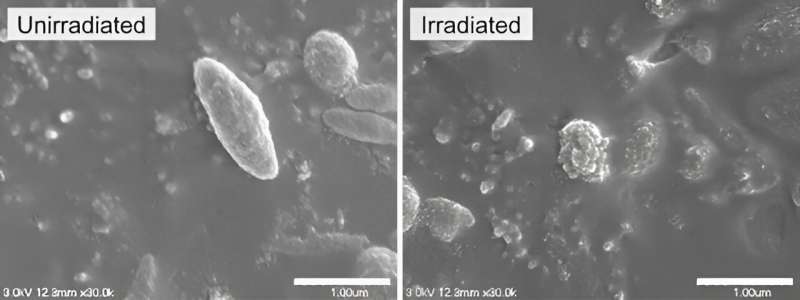This article has been reviewed according to Science X's editorial process and policies. Editors have highlighted the following attributes while ensuring the content's credibility:
fact-checked
peer-reviewed publication
trusted source
proofread
Spot-on laser treatment for skin blemishes becoming clearer with new index

Many people bothered by skin blemishes might turn to laser treatment. To improve efficacy and reduce complications from such laser treatment, an Osaka Metropolitan University-led research group has developed an index of the threshold energy density, known as fluence, and the dependent wavelength for picosecond lasers. The work was published in Lasers in Surgery and Medicine.
Picosecond lasers have in recent years been used to remove pigmented lesions. These lasers deliver energy beams in pulses that last for about a trillionth of a second. The lasers target melanosomes, which produce, store, and transport the melanin responsible for pigment.
Postdoctoral Fellow Yu Shimojo of OMU's Graduate School of Medicine and Specially Appointed Professor Toshiyuki Ozawa and Professor Daisuke Tsuruta of the school's Department of Dermatology were among the researchers who developed this first picosecond laser index for each of the wavelengths used in clinical practice in treating pigmented lesions.
Comparing previously-reported clinical studies, the researchers confirmed that clinical results showing low complication rates and high efficacy can be explained based on these wavelength-dependent indicators.
"The use of this indicator is expected to play an important part in setting irradiation conditions in clinical practice," Postdoc Fellow Shimojo said. "In addition, the implementation of picosecond laser therapy based on scientific evidence, rather than relying solely on physicians' experience, is expected to improve the safety and effectiveness of the treatment."
More information: Yu Shimojo et al, Wavelength‐dependent threshold fluences for melanosome disruption to evaluate the treatment of pigmented lesions with 532‐, 730‐, 755‐, 785‐, and 1064‐nm picosecond lasers, Lasers in Surgery and Medicine (2024). DOI: 10.1002/lsm.23773




















